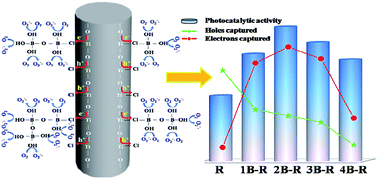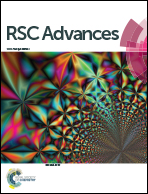Capturing photogenerated electrons and holes at the B/Cl co-modified rutile TiO2 nanorods during organic pollutant degradation†
Abstract
Degrees for capturing photogenerated holes by residual chemically-adsorbed Cl as donators and electrons by increased amount of adsorbed O2 as receptors after H3BO3 modification in rutile nanorods are quantitatively controlled based on the surface photovoltage measurements, suggesting that capturing electrons is dominant compared to capture holes in colorless pollutant degradation.


 Please wait while we load your content...
Please wait while we load your content...